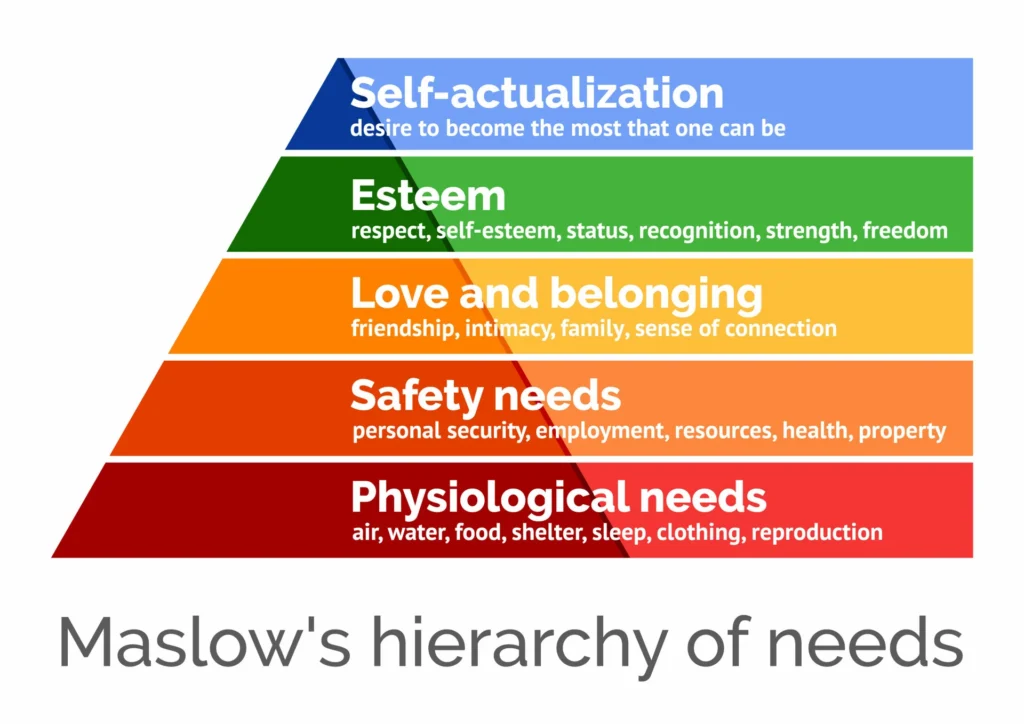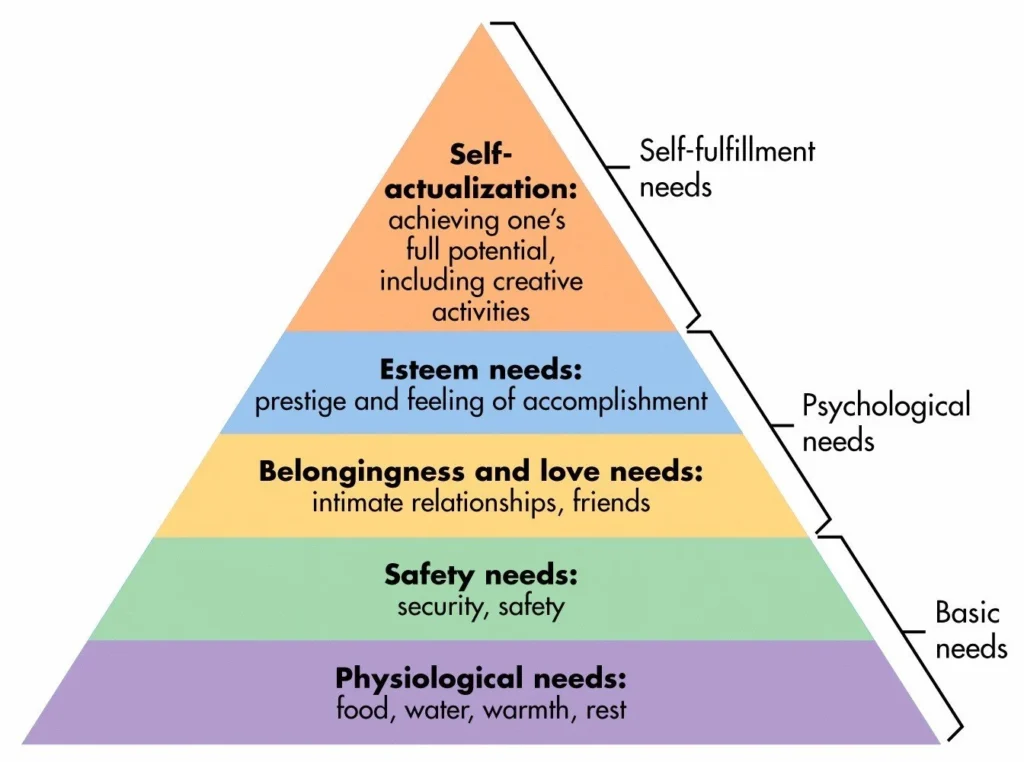Maslow’s Hierarchy of Needs
Maslow’s hierarchy of needs motivates human behaviour which was proposed by the American psychologist Abraham Maslow in his paper “A Theory of Human Motivation” in the journal Psychological Review in 1943.
Maslow’s hierarchy of needs is a motivational theory or say conceptualisation of the needs (or goals) that states human needs. It is arranged in a five-tier hierarchy, with basic needs at the bottom and higher-level needs at the top. The levels are: physiological needs, safety needs, love and belonging, esteem needs, and self-actualization.
According to Maslow, Individuals are motivated to fulfil lower-level needs before pursuing higher ones, with self-actualization representing the desire to become one’s fullest potential. These needs are related to each other in a hierarchy of strength beginning with the physiological needs that are the most powerful of all. If the physiological needs are fulfilled, a new set of safety needs emerges. If both the physiological and safety needs are fairly well gratified, the prepotent need of love then emerges. The next need is esteem, and finally self-actualization.

Maslow also coined the term “metamotivation” to describe the motivation of people who go beyond the scope of basic needs and strive for constant betterment.
The hierarchy of needs developed by Maslow remains a popular framework and tool in higher education, business and management training, sociology research, counselling and social work etc.
Pyramid
Maslow’s hierarchy of needs is often represented in the shape of a pyramid, with the largest, most fundamental needs at the bottom, and the need for self-actualization at the top. However, Maslow himself never created a pyramid to represent the hierarchy of needs.
Charles McDermid, an American consulting psychologist states, “the hierarchy of needs is arranged in a pyramid of five levels, from basic physiological drives at the bottom to the desire for self-realisation, the highest expression of the human spirit, at the apex”.

The most fundamental four layers of the pyramid contain what Maslow called “deficiency needs” or “d-needs”: esteem, friendship and love, security, and physical needs. If these “deficiency needs” are not met – except for the most fundamental (physiological) need – there may not be a physical indication, but the individual will feel anxious and tense. Deprivation is what causes deficiency, so when one has unmet needs, this motivates them to fulfill what they are being denied.
Maslow’s Hierarchy of Needs in Banking
In fact, Maslow’s Hierarchy of Needs applies to both clients and employees in banking, guiding financial product development and human resource management by addressing basic needs like stability and security first, then progressing to social, esteem, and self-actualization needs through tailored financial solutions, benefits, and career growth opportunities.
For clients, this means offering solutions for basic living expenses, asset protection, loans for social connections, wealth building for status, and financial planning for wealth distribution to achieve personal goals.
For employees, it involves ensuring fair compensation and benefits (physiological), secure employment (safety), team cohesion (social), recognition and professional development (esteem), and opportunities for leadership and personal growth (self-actualization).
- Physiological Needs
Since addressing basic needs for survival and stability is the first step to building trust with clients, it includes products like:
- Core Savings Accounts: Offer accessible and straightforward accounts for everyday transactions.
- Recurring & Fixed Deposits: Encourage disciplined savings or habit for clients seeking financial stability.
- Personal Accident Cover: Provide peace of mind through essential protective products.
- Security Needs
Because clients seek protection for their assets and financial future. Banking solutions can include:
- Life Insurance Plans: for safety and security of the family.
- Health Policies: for safety and security of the family.
- Housing Loans: Design loans with competitive rates and clear terms for first-time buyers.
- Tax Planning Solutions: Position tax-saving products as dual benefits for growth and compliance.
- Social Needs
Help clients strengthen their social and cultural connections through customized offerings:
- Consumer Loans: Fund clients’ aspirations for lifestyle improvements.
- Professional Development Loans: Support career goals of professionals like doctors, engineers, Advocates and consultants.
- Retail Gold loan: Cater to cultural and gifting traditions through trusted investment products.
- Esteem Needs
Clients at this stage seek financial empowerment and status. Products that resonate include:
- Investment Plans: Offer tailored mutual fund portfolios and SIPs for wealth growth.
- Home Improvement Loans: Help clients enhance their living standards.
- Special Term Deposits: Provide premium options with attractive returns for high-value clients.
- Self-Actualization Needs
Facilitate clients in achieving their dreams and leaving a legacy. Key offerings include:
- Retirement Plans: Develop solutions that ensure post-retirement comfort and stability.
- Senior Citizen Fixed Deposits: Promote high-interest savings products for retirees.
- Pensioners Loans: Address specific financial needs of senior citizens.
Read also….
What is Digital Banking?
Artificial Intelligence- Application and Research
Reverse Mortgage Loan (RML)